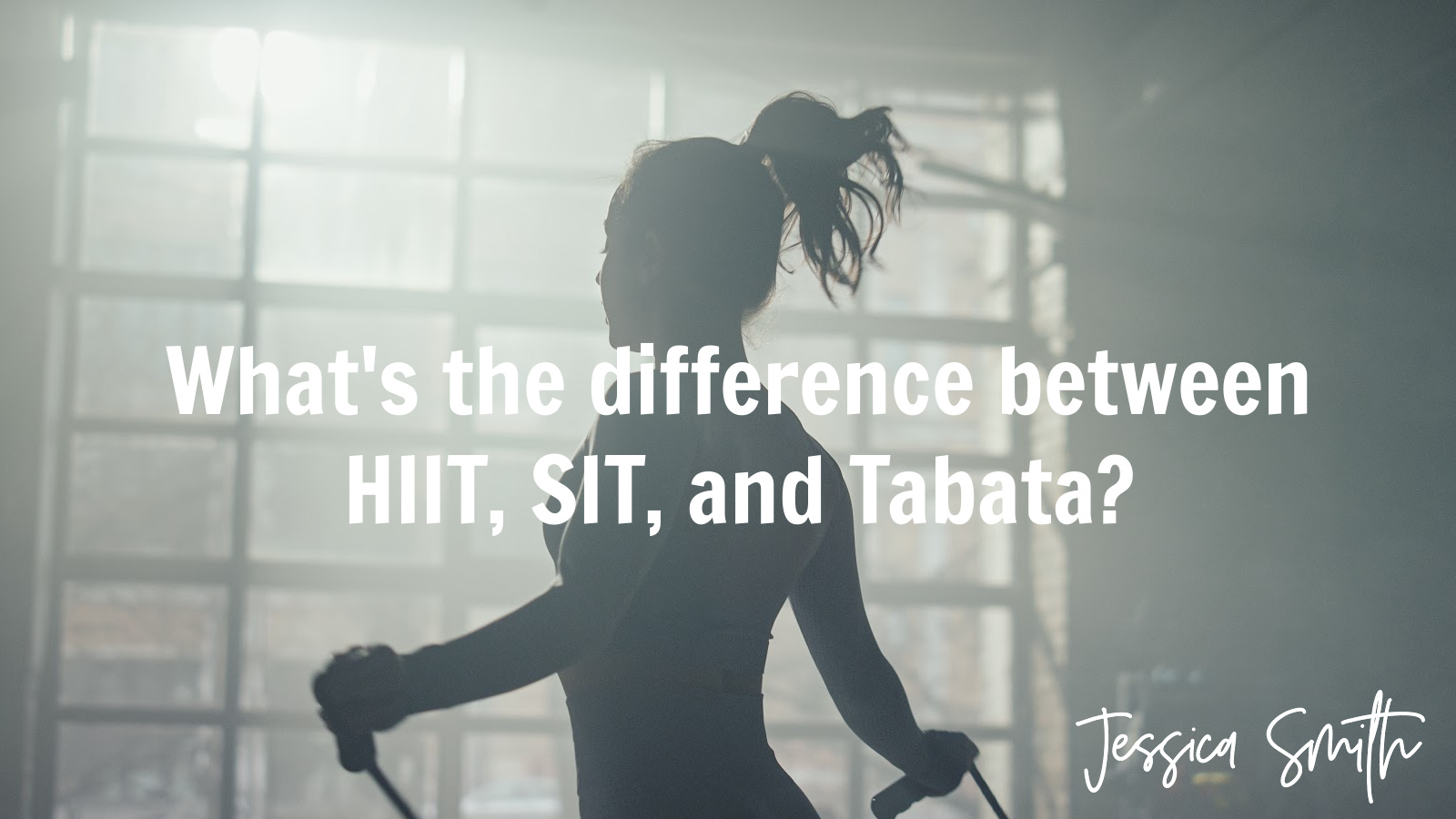
You may have heard HIIT, SIT, and Tabata before regarding workout names, but what exactly do they mean (and are they required to get fit)?
SIT and Tabata are both types of high-intensity interval training (HIIT), which, according to the American Council on Exercise, High-intensity interval training (HIIT) can provide numerous health and fitness-boosting benefits (including “increased mitochondrial density, improved stroke volume, improved oxidative capacity of muscle and enhanced aerobic efficiency.”
HIIT (or High-Intensity Interval Training) is a workout format that usually consists of alternating periods of higher-intensity exercise effort (about 80% of your maximum heart rate) with an active recovery or rest period between bouts of exertion. The work-to-rest ratio may vary depending on design, with the recovery ranging from two to three times the interval length. It’s been a fitness industry “trend” for almost ten years and has seen numerous iterations in various programs, gyms, and series.
Want to give it a try? Check out our “Adjustable HIIT” routine here on our YouTube channel (and in your “All Access Pass” library here).
SIT (or Sprint Interval Training) is a type of HIIT training typically consisting of shorter bursts of high-intensity effort (30 seconds or less) with varied recovery and work-to-rest ratios. When the short bursts are coupled with more extended recovery periods (2-5 minutes), it can allow for more effective effort during the intervals due to the body’s ability to recover completely.
Want to give it a try? Check out our new “Interval: Sprint Training” session in your “All Access Pass” library.
Tabata is another type of HIIT training format. The original Tabata protocol was much shorter (and much more intensive!) than average interval sessions, clocking in at just 4 minutes. Named after Japanese researcher Izumi Tabata, Tabata is a specific 4-minute HIIT protocol that alternates 20 seconds of maximum effort with 10 seconds of rest, repeated eight times. Tabata used this protocol (coupled with 70 minutes of steady state cardio on alternate days) to train the men’s Japanese Olympic speed skating team and found that it significantly improved subjects’ anaerobic and aerobic fitness levels more than hour-long endurance sessions (which makes sense, especially for speed skaters!).
While Tabata may be great for training for some athletes (such as speed skaters), other forms of HIIT and SIT may be more appropriate for general fitness goals because of Tabata’s extreme effort requirement. And some research on SIT found it as effective (and in some cases slightly more) than traditional HIIT.
RELATED: WHAT’S THE BEST WORKOUT FOR WEIGHT LOSS?
Can I keep interval work low impact?
While it is common to see the more explosive type of movements or sprints to bring the heart rate up to these interval levels of effort, you can also use any of these protocols on a low impact equipment such as an elliptical, treadmill (using an inclined fast walk instead of running) or cycling bike if preferred (just be sure to allow for some additional time to adjust your speed, incline or both to get in/out of your interval windows if using a machine). Or, if you can power walk or have another low-impact movement that works to get your heart rate up to those higher ranges, then the impact is optional to achieve that intensity target.
If your body can safely handle impact,* adding regular plyometric training can improve bone health and muscle strength.
Do I need to do HIIT, SIT, and Tabata to get fit?
Not at all! Unless you have an established fitness habit that you already enjoy and want to expand your training goals into more detailed specifics (such as VO2 Max improvements, etc.), I don’t recommend this type of training (yet).
While these types of interval protocols offer benefits such as improved strength, endurance, and body composition, plenty of other forms of exercise can help achieve these goals. Proponents of this type of training claim that you’ll “burn more calories in less time” with this type of higher-intensity work, but the calorie burn within each workout isn’t as important as the cumulative effect regular exercise can have on our body and our health.
The great news is that you don’t have to do this type of high-intensity work if it’s not something you want to incorporate into your routine at this time (you may want to try it at a different stage, or not, it’s all up to you and your fitness goals!). If weight loss or maintenance is one of your fitness goals, focus on optimizing your nutrition and pairing it with a balanced workout plan that you can maintain for the long term.
If you want to start (or continue) using interval training in your workout program, you’ll want to work it into your routine at the right time. If you’re under a lot of stress, unable to sleep, recover, fuel, or hydrate well, skip the higher exertion stuff for now.
While these types of workouts may get a lot of attention and headlines for their time-saving effectiveness, it’s important to remember that what is most effective depends on your goals, needs, and preferences.
Consistency trumps intensity every time, so stay focused on what works best for you and allows you to keep moving forward on your journey.
Here’s to your health!
Join us for all types of cardio, strength, mobility, core and more in our “All Access Pass” membership! CLICK HERE to learn more and get started with your free 7-day trial today!
*If you have had or are currently dealing with ankle, knee, or hip conditions or injuries, or have been diagnosed with osteopenia or osteoporosis, be sure to discuss with your doctor before adding higher-impact exercise. As always, check with your doctor before beginning any exercise program, especially with higher-intensity training.

0 Comments